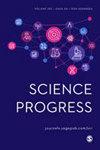Optimization of battery charging and discharging strategies in substation DC systems using the dual self-attention network-N-BEATS model
IF 2.6
4区 综合性期刊
Q2 MULTIDISCIPLINARY SCIENCES
引用次数: 0
Abstract
With the rapid pace of urbanization and industrialization, the demand for electricity has surged, placing immense pressure on power management systems. Substation DC systems play a crucial role in managing these fluctuations to ensure a stable and reliable power supply. However, existing battery charging and discharging strategies often suffer from inefficiencies, which can negatively impact overall system performance and sustainability. In this study, we introduce a novel approach that leverages artificial intelligence and time series predictive analytics through the dual self-attention network-neural basis expansion analysis for time series (DSAN-N-BEATS) model. This model integrates the self-attention network with the neural basis expansion analysis for time series (N-BEATS) model to accurately capture time-series data and optimize battery management. Our experimental results demonstrate that the DSAN-N-BEATS model significantly enhances battery state prediction accuracy, achieving a 95.84% accuracy rate, and improves charging and discharging efficiency by 20% compared to traditional methods. These improvements contribute to the overall reliability and sustainability of power systems. This research provides innovative methods for optimizing battery strategies, supporting sustainable development in the power industry, and enhancing system stability and reliability.利用双自注意网络-N-BEATS 模型优化变电站直流系统中的电池充放电策略
随着城市化和工业化进程的加快,电力需求激增,给电力管理系统带来了巨大压力。变电站直流系统在管理这些波动以确保稳定可靠的电力供应方面发挥着至关重要的作用。然而,现有的电池充放电策略往往效率低下,会对系统的整体性能和可持续性造成负面影响。在本研究中,我们通过时间序列双自注意网络-神经基扩展分析(DSAN-N-BEATS)模型,介绍了一种利用人工智能和时间序列预测分析的新方法。该模型集成了自我注意网络和时间序列神经基扩展分析(N-BEATS)模型,可准确捕捉时间序列数据并优化电池管理。实验结果表明,DSAN-N-BEATS 模型显著提高了电池状态预测的准确性,准确率达到 95.84%,与传统方法相比,充电和放电效率提高了 20%。这些改进有助于提高电力系统的整体可靠性和可持续性。这项研究为优化电池策略、支持电力行业的可持续发展以及提高系统稳定性和可靠性提供了创新方法。
本文章由计算机程序翻译,如有差异,请以英文原文为准。
求助全文
约1分钟内获得全文
求助全文
来源期刊

Science Progress
Multidisciplinary-Multidisciplinary
CiteScore
3.80
自引率
0.00%
发文量
119
期刊介绍:
Science Progress has for over 100 years been a highly regarded review publication in science, technology and medicine. Its objective is to excite the readers'' interest in areas with which they may not be fully familiar but which could facilitate their interest, or even activity, in a cognate field.
 求助内容:
求助内容: 应助结果提醒方式:
应助结果提醒方式:


